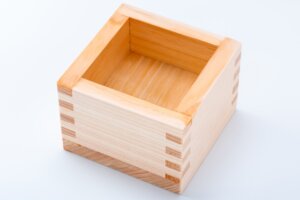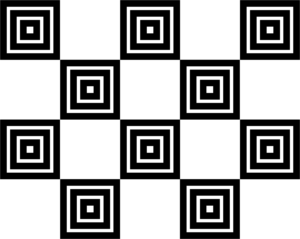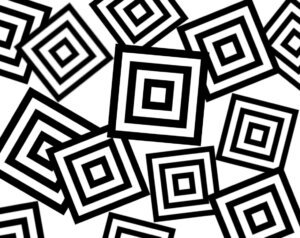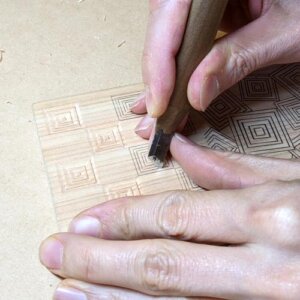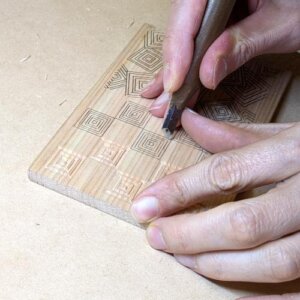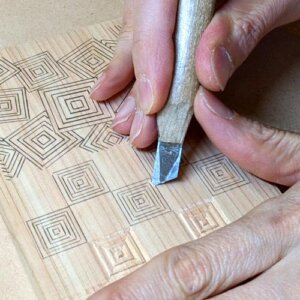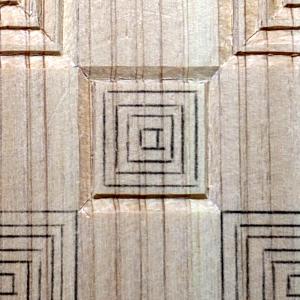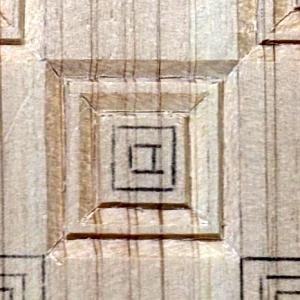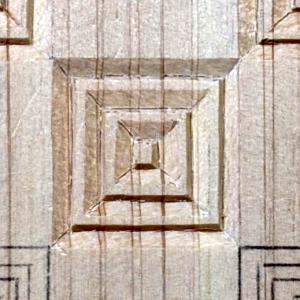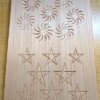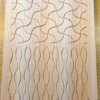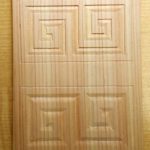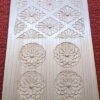How to carve patterns Part 6 ~Mimasu-Tsunagi and Mimasu-Chirashi~
"Masu(枡)" is a Japanese square wooden measure cup to measure grains or liquid.”Mimasu(三枡)” is a pattern of large, medium, and small triple-layered Masu nested together when viewed from above.
This time I explain how to carve ``Mimasu-Tsunagi'' and ``Mimasu-Chirashi'' which are composed of Mimasu pattern.
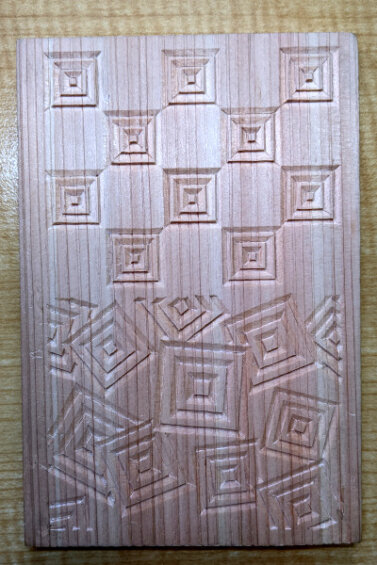
Two carving chisel were used: a sharp chisel and a flat chisel .
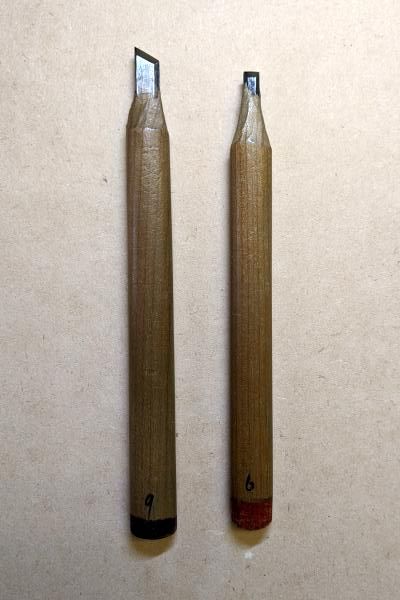
Preparation
Use carbon paper to trace ``Mimasu-Tsunagi'' and ``Mimasu-Chirashi'' onto a postcard-sized wooden board. The sketches can be downloaded from here (PDF of Mimasu-Tsunagi and Mimasa-Chirashi) , so please use them.
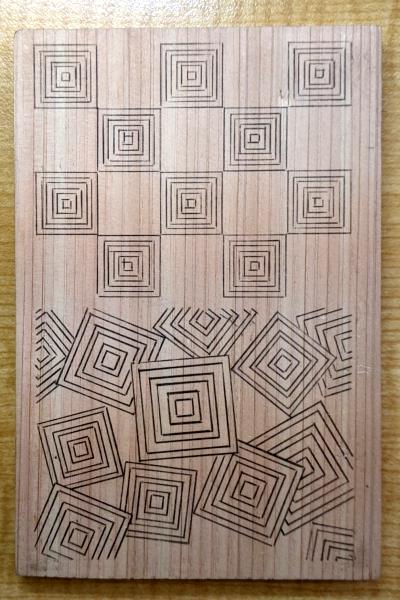
1. How to carve “Mimasu-Tsunagi”
Using the sharp chisel, make a cut at a certain depth at the red line of the three squares, and gradually cut deeper into the green arrow line in the direction of the arrow. Carve the blue part on the slope with the flat chisel or the sharp chisel.

The cross section look like this:

If you carve the three squares in order from the outer square to the inner square, it look like this.
The three squares are carefully carved one by one so that the sketch disappears.
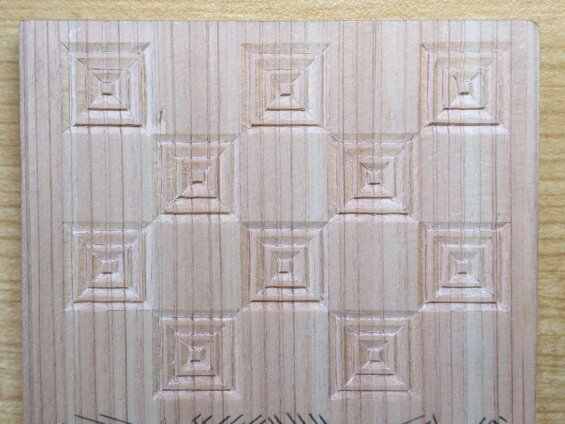
2.How to carve “Mimasu-chirashi”
"Mimasu-chirashi" is a carving method that is almost the same as "Mimasu-tsunagi".
However, this time's “Mimasu-chirashi” has some parts that overlap with the three squares. In order to make this area look nice, I used the tip of the sharp chisel to carve the triangular surface like the yellow part.
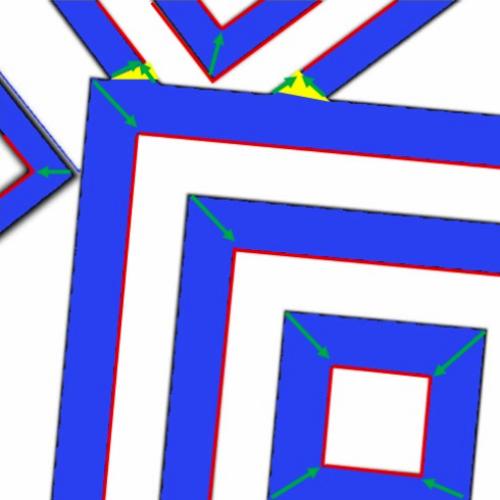
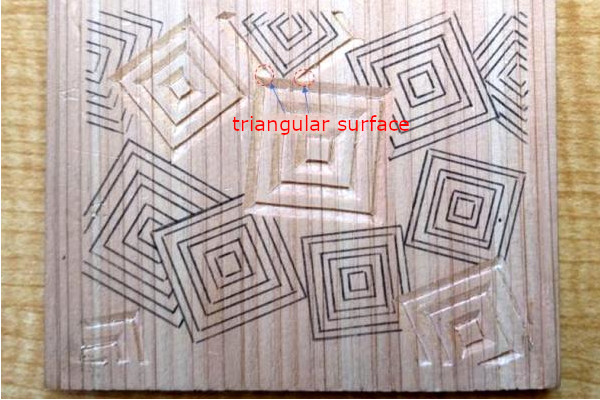
There are other places where triangular surfaces are applied, but let's think about it yourselves.
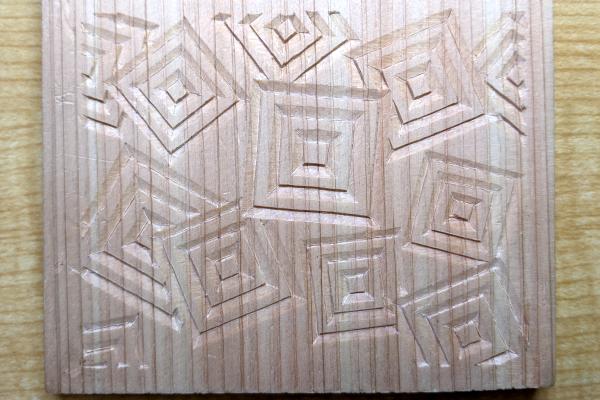
How to carve patterns
- From the lattice to the scales
- Raimon
- Asanoha and Sayagata
- Seigaiha and Sippo-Tsunagi
- Higaki and Kumikikko
- Mimasu-Tsunagi and Mimasu-Chirashi ←Current page displayed
- Ryusui
- Bundo-Tsunagi and Tatewaku
- Yamajimon and Misujidate
- Kemanmon and Gobosei
- Chidori and Chidori-Goshi
- Nejiume (Twisted plum)
- Kikubishi and Yaegiku
- Ichimatsu and Sankuzushi
- Kikko and Yagasuri
- Clouds
- Waves

